‘He never returned’: Widespread misery in India’s flooded Assam
At least 28 dead and about a million people impacted as severe pre-monsoon rains cause flooding in parts of Assam.
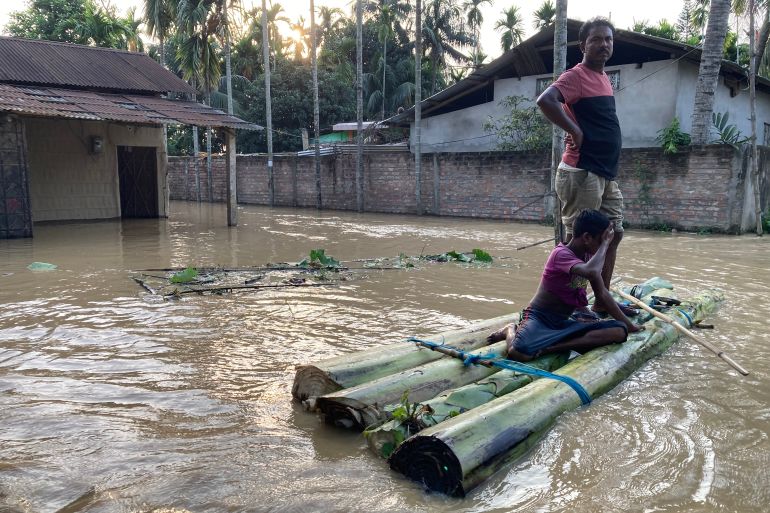
Nagaon, Assam – Over two days, Krishna Bhadra had gone to his flooded house in Nagaon district’s Garmaj village several times to salvage his family’s belongings after floodwaters suddenly roared in last week.
The family of four had taken refuge in a small pavilion of a government building in Nagaon, 122km (76 miles) from the main city of Guwahati in India’s northeastern Assam state.
Keep reading
list of 4 itemsPhotos: Deadly floods cause havoc in Bangladesh, northeast India
‘Children are starving’: A cry for help from flood-hit Bangladesh
In India, waiting for the monsoon
On Saturday, Krishna asked his wife Basanti to cook quickly so he could eat and go back to the village.
“He went to check if our house has been totally damaged by the floodwater,” Basanti said. “He never returned.”
Krishna’s body was recovered by the police from the family’s flooded home on Sunday.
“He did not know how to swim. Perhaps he slipped and drowned,” Ganesh Rai, his brother-in-law told Al Jazeera.
Krishna, a daily wager, was the only earning member of the family.
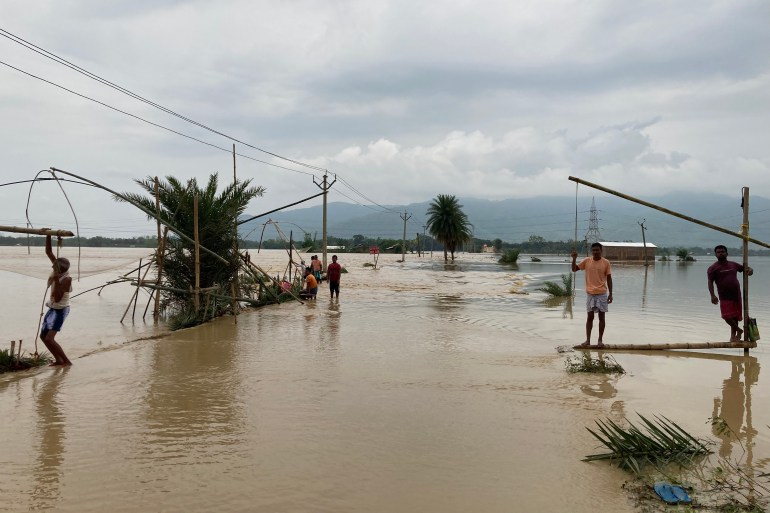
As many as 28 people have lost their lives and approximately a million residents impacted as severe pre-monsoon rains led to landslides and flooding in parts of Assam.
‘Everything is under water’
The heavy pre-monsoon rains caused extensive damage to rail links and highways even as government officials said they were working “on a war-footing” to restore connectivity and provide relief.
The Kopili River, a tributary of the mighty Brahmaputra, is still flowing over the danger mark. The river flowed at its highest flood level on May 17, marooning large parts of Hojai and Nagaon districts.
The Assam State Disaster Management Authority’s (ASDMA) bulletin on Wednesday said nearly 600,000 people in the state’s 15 districts continue to be affected by the floods and more than 72,000 are still in relief camps in southern and central Assam.
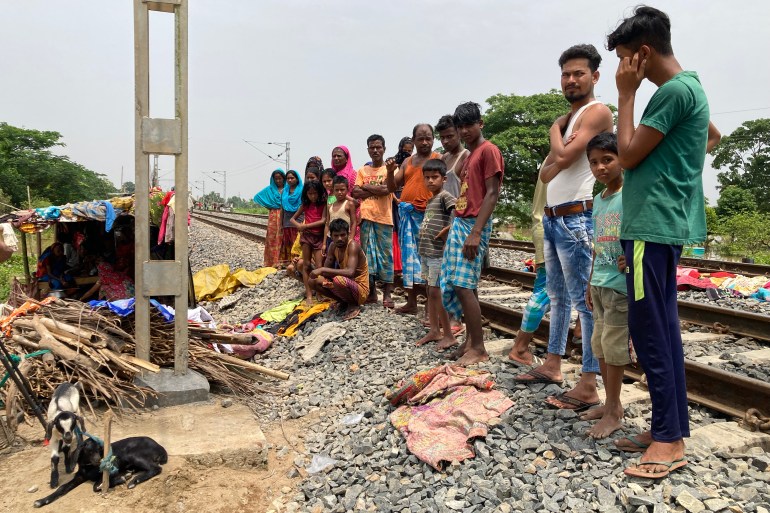
Hundreds of others are living under tarpaulins on the highways, railway tracks or any other higher ground they could find even as floodwaters start to recede.
Since early April, flooding has affected 33 districts of Assam and about one million residents had to move to relief camps, ASDMA officials said.
Several government agencies, including the National Disaster Response Force, the State Disaster Response Force, the Indian Army and the Indian Air Force, have been called in for relief and rescue.
Assam’s minister for revenue and disaster management Jogen Mohan on Tuesday evening said the “situation is under control”.
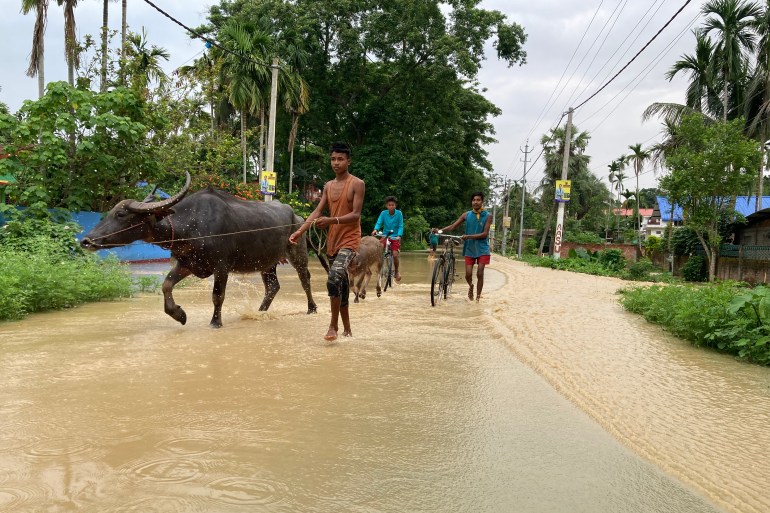
But the locals are still in shock and waiting to start rebuilding their lives.
“It was in 2004 that the water level was this high,” recollected Asar Ali, a hawker in Dighali Ati village.
Since May 19, Asar’s family of seven has been living near the rail tracks under a tin and tarpaulin shack he borrowed from other villagers. Houses on both sides of the tracks are still under water as residents wait for more relief from the administration.
“So far we only got two kilogrammes (four pounds) of rice, 200 grammes (seven ounces) of lentils and a litre (about a quart) of water from the local administration,” Asar told Al Jazeera.
Every day, Asar walks to the nearby village with a bucket to get clean drinking water for the family.
In Barkhal village of Morigaon district, Kushila Rajbhar is still waiting for a tarpaulin from the local administration.
“Every time there is a flood, the relief comes and we get a tarpaulin and other things. This time we have only received chura (flattened rice), sugar, and biscuits,” Kushila told Al Jazeera, as she stood outside her flooded house.
Her meagre belongings, a few utensils and some clothes, lie on a black plastic sheet outside. The wet paddy has been spread on the highway to dry.
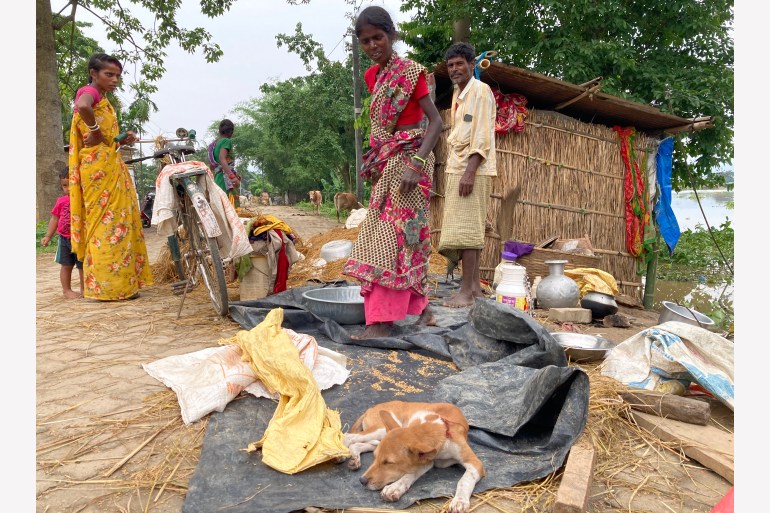
A part of the paddy field the family had been renting is now submerged under floodwaters.
“There is no work for me as everything is under water. I will have to look for work to provide for my family,” Rajbhar said.
‘Devastation unprecedented’
A senior government official described the floods as a “pre-monsoon shock”.
The flooding season in Assam usually starts after May 15. It is mostly during the monsoons that the many rivers flowing through the state, including Brahmaputra and Barak, are in spate and maroon large parts of the state.
Officials say acute rainfall in Assam and neighbouring areas between May 12 and May 18 was the reason for the widespread devastation in the hill district of Dima Hasao, Barak Valley in southern Assam and Nagaon and Hojai in central Assam.
ASDMA data shows Assam received 327 percent excess rainfall during this period, while neighbouring Meghalaya state saw 663 percent excess rains.
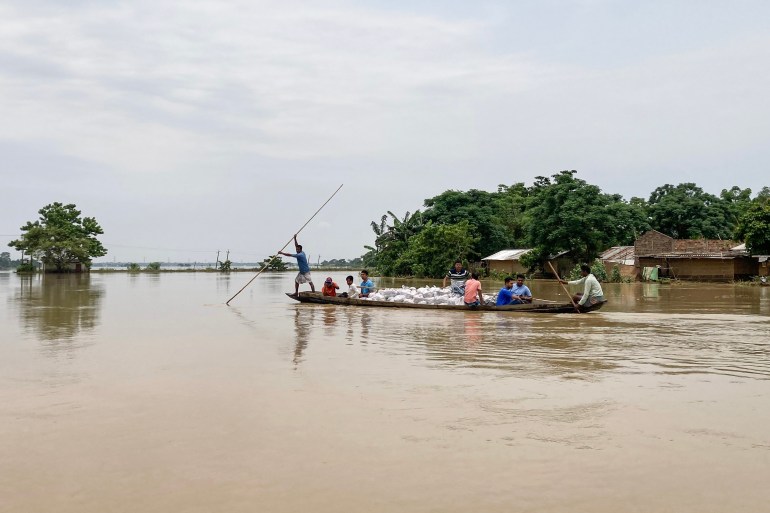
Mirza Zulfiqur Rahman, an independent researcher in Guwahati, says it was the excess rainfall since March this year that foreshadowed the current devastation.
“Whatever damage happened is not just because of rainfall that happened in May but also because of rainfall that happened in March which laid down the ground conditions for this high intensity rainfall to create more damage,” he told Al Jazeera.
Between March 1 and May 25, Assam received 55 percent excess rainfall while neighbouring Meghalaya recieved 122 percent excess rains as per IMD data.
“This kind of devastation is unprecedented,” said Daniel Langthasa, a member of the North Cachar Hill Autonomous District Council (NCHADC), which has partial legislative and executive jurisdiction over Dima Hasao, a tribal district and the state’s only hill station.
“In Haflong, the villages have caved in,” Langthasa said.
The picturesque hill station bore the brunt of the devastation. Riki B Phukan, an ASDMA official in Dima Hasao, said the district had seen more than 100 landslides since May 10. In the Haflong block of the district, as many as 2,756 houses were damaged.
“We are yet to assess the damage in other parts as the roads have been damaged,” he said, adding that the power supply is yet to be fully restored. Some parts of the district have had no power since May 10.
Landslides also damaged National Highway 54, which cuts through Dima Hasao and the Lumding-Badarpur section of the Indian railways network which connects southern Assam, Tripura, Mizoram and Manipur states.
“We are looking to restore the rail link by July 10,” said a spokesperson of the Northeast Frontier Railways.
Mohan, Assam’s minister for revenue and disaster management, said the highway has been restored till Haflong. “The work is going on war footing to restore the damaged roads,” he said.
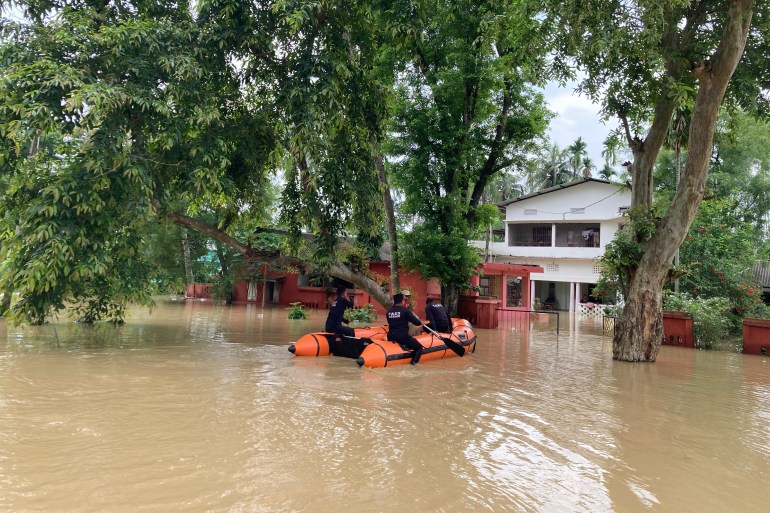
The state administration requisitioned the Indian Air Force to drop essential supplies and fuel to inaccessible parts of the district. “Till Tuesday, 20 tonnes of fuel and food supplies had been airdropped,” said Ibon Teron, a senior district official.
Experts say this excessive rainfall is rare and a clear sign of climate change.
“Such excessive rainfall and such calamitous floods affecting more than half of the state’s geographical area has been rarely seen,” said Partha Jyoti Das, who heads the Water, Climate and Hazard Division of the Aaranyak, a Guwahati-based NGO.
“This is clearly a signature of climate change under the impact of which the northeast region is projected to receive extremely high rain episodes, more frequently and all over.”
Experts say it is futile to blame climate change alone and that non-climatic factors have worsened the flood situation. Rahman explains how ecological concerns were ignored as infrastructure building got a big push in the region.
“The logic given for infrastructure building was that it is for furthering economic connectivity. But at the same time they were disrupting the ecological connectivity. If you don’t put ecological connectivity at the heart of economic connectivity projects, all such projects are doomed to fail in the face of climate change,” Rahman told Al Jazeera.
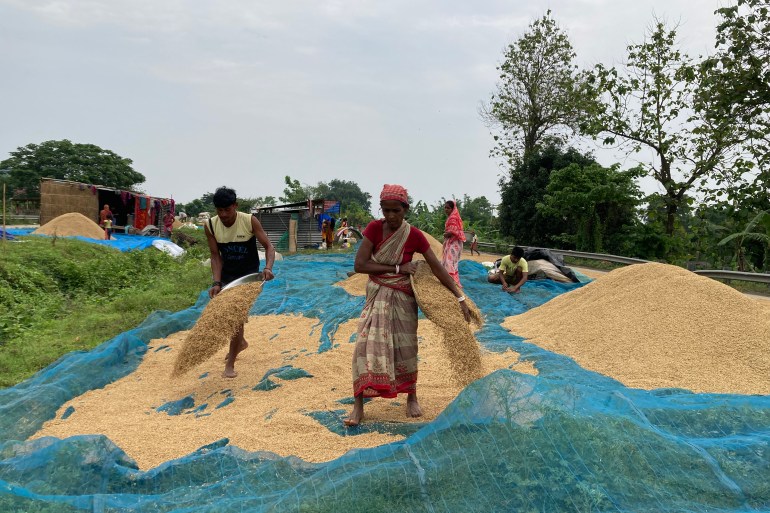
Dima Hasao is one of the districts in Assam that have seen many big-ticket infrastructure projects recently, including a broad-gauge rail link, roads and highways.
Das attributes the grim flood scenario to how deforestation and faulty land use practices have increased riverbed siltation even as structural measures and encroachment on core floodplains cause channel congestion.
ASDMA chief Gyanendra Dev Tripathi said the government is working on a multi-pronged strategy to deal with the floods. He explained how the early warning system is being upgraded to make sure residents are alerted in time with more accuracy.
The government has also built community shelters in some districts, which would work as relief camps during flooding and community spaces during normal times. More are being built.
The state government has chosen 100 villages where it is testing a climate-resilient infrastructure, including raised houses, and proper water and sanitation systems.
But experts say the government needs to do more. “They are trying to mitigate flood hazards with age-old and temporary measures like earthen embankments,” Das said.
“Non-structural measures like catchment and watershed management and flood forecasting and flood early warning etc, have never been taken seriously,” he said, adding that Assam needed “a time-bound master plan with a pragmatic, progressive and adaptive integrated flood and erosion management policy”.